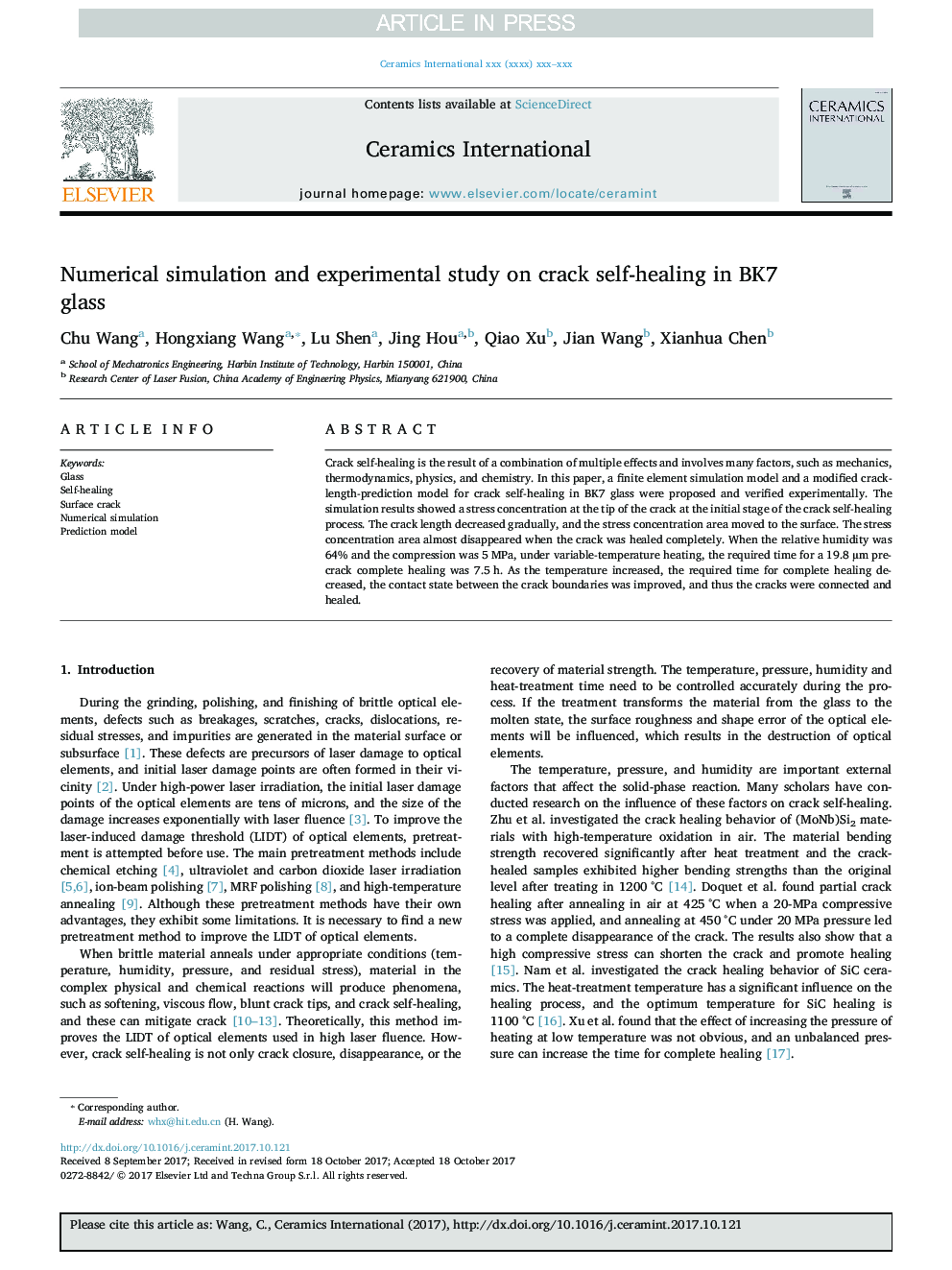| Article ID | Journal | Published Year | Pages | File Type |
|---|---|---|---|---|
| 7889094 | Ceramics International | 2018 | 9 Pages |
Abstract
Crack self-healing is the result of a combination of multiple effects and involves many factors, such as mechanics, thermodynamics, physics, and chemistry. In this paper, a finite element simulation model and a modified crack-length-prediction model for crack self-healing in BK7 glass were proposed and verified experimentally. The simulation results showed a stress concentration at the tip of the crack at the initial stage of the crack self-healing process. The crack length decreased gradually, and the stress concentration area moved to the surface. The stress concentration area almost disappeared when the crack was healed completely. When the relative humidity was 64% and the compression was 5 MPa, under variable-temperature heating, the required time for a 19.8 µm pre-crack complete healing was 7.5 h. As the temperature increased, the required time for complete healing decreased, the contact state between the crack boundaries was improved, and thus the cracks were connected and healed.
Related Topics
Physical Sciences and Engineering
Materials Science
Ceramics and Composites
Authors
Chu Wang, Hongxiang Wang, Lu Shen, Jing Hou, Qiao Xu, Jian Wang, Xianhua Chen,
